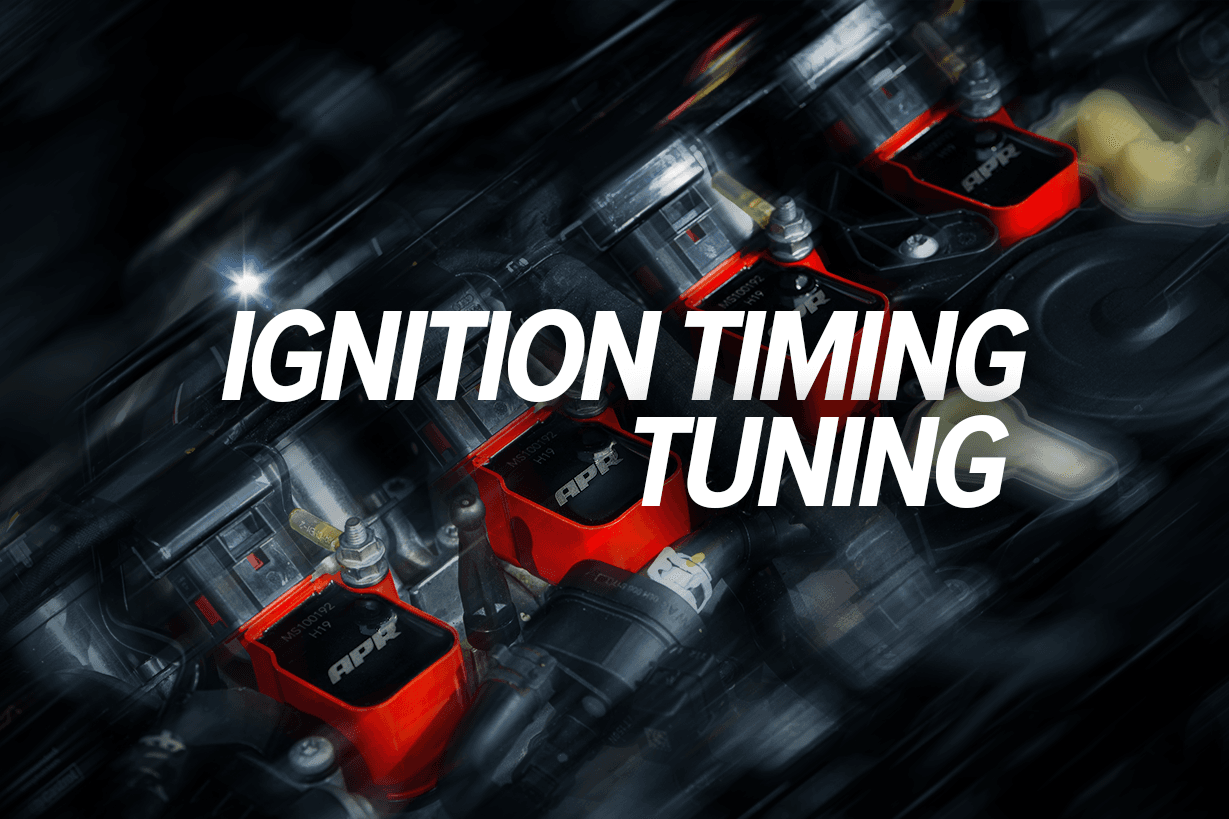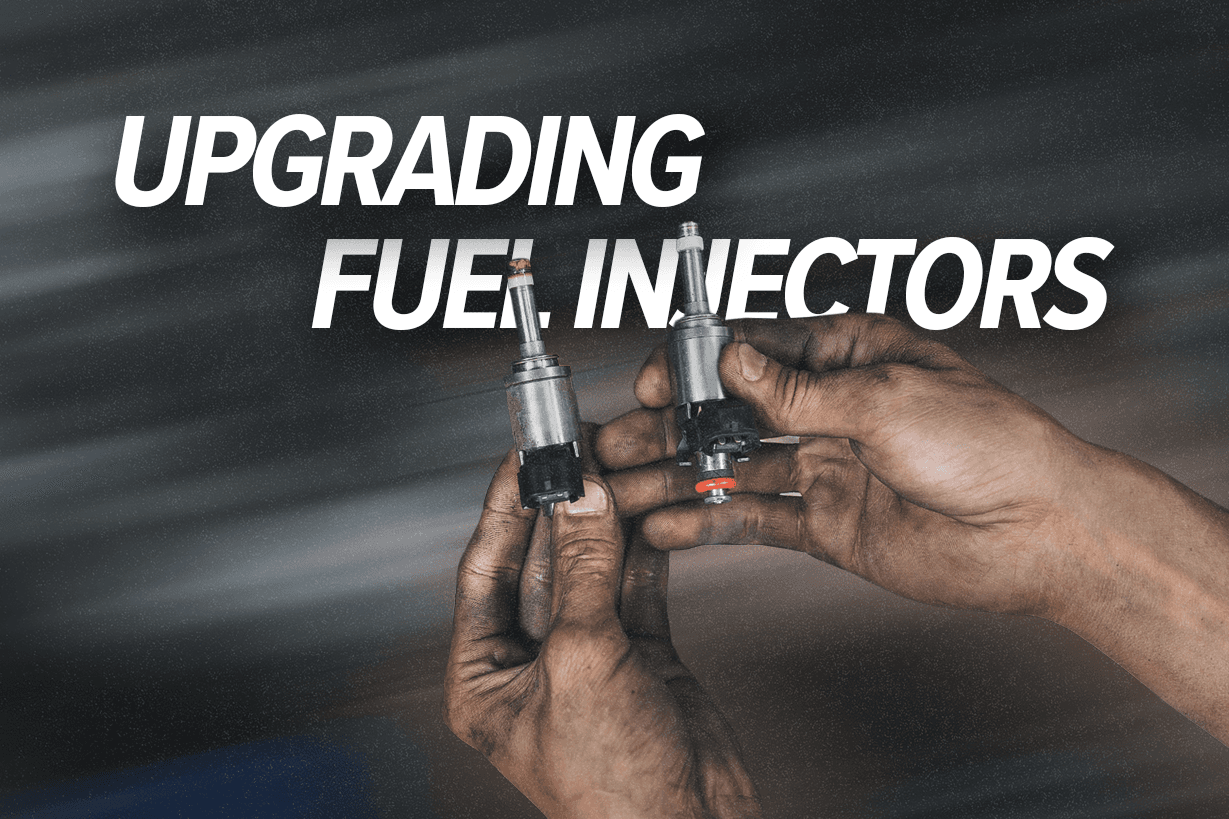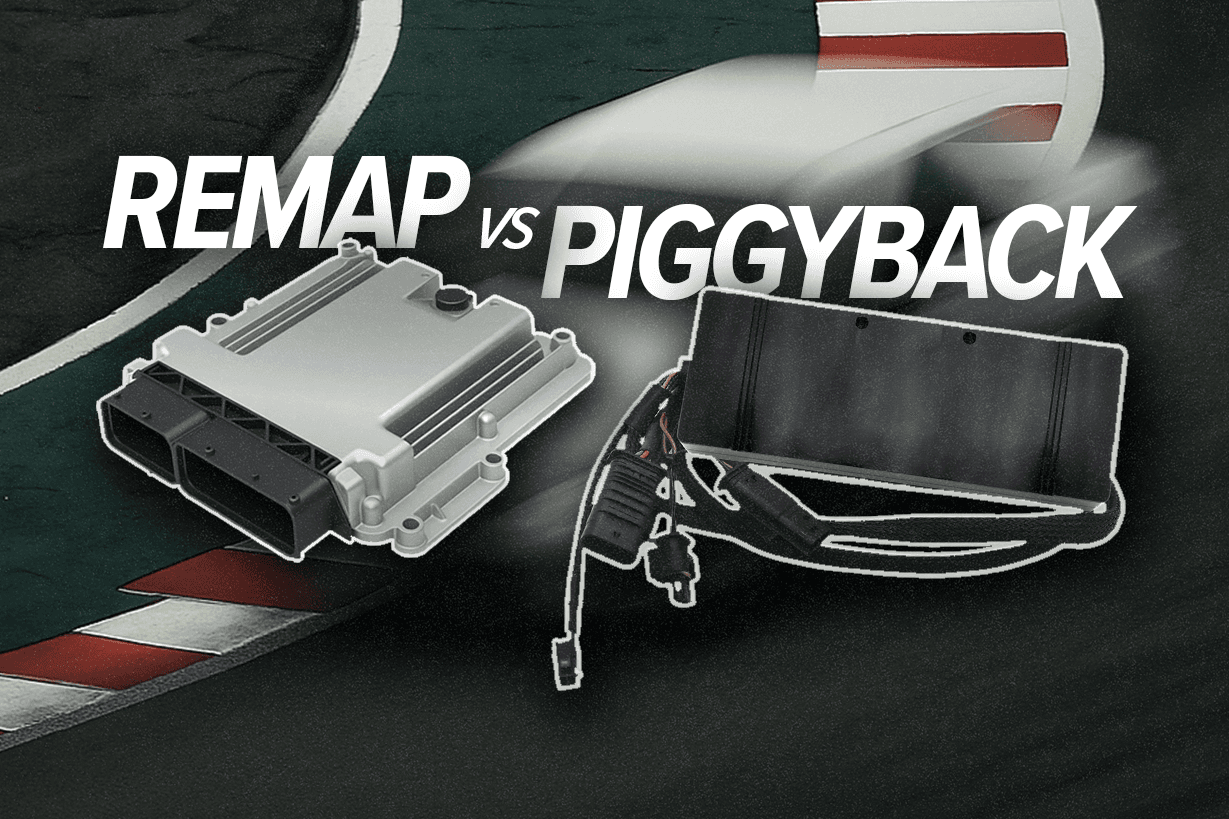The Precision Behind the Spark
Ignition timing operates on a millisecond scale. At 6000 rpm, one degree of crankshaft rotation lasts less than 0.03 milliseconds. That’s how tight the margin is. A spark fired even slightly too early or too late can mean the difference between torque and trouble. Big trouble. A hole in your engine block kind of trouble.
Ignition timing controls when combustion begins. It’s one of the most powerful tools in any tuner’s hands, for power, drivability, or engine safety. In this article, I’m going to break down the modern approach to ignition timing, from basic concepts to expert calibration techniques, so you know exactly what’s happening, why it matters, and how to tune it.

What Is Ignition Timing?
Ignition timing is the crank angle, measured in degrees before top dead centre (BTDC), when the spark plug fires. Combustion doesn’t happen instantly. By firing the spark before the piston reaches TDC on the compression stroke, pressure can peak just after TDC, when it helps drive the piston down.
Before modern ECUs, ignition timing was controlled mechanically. Distributors used rotating cams and breaker points to fire the coil, while timing advance came from two physical systems: centrifugal weights that responded to engine RPM, and vacuum canisters that reacted to engine load. These systems were limited, often crude, and prone to wear. Timing curves were fixed, and adjustments had to be made by hand using timing lights, shims, or springs.
Today, engine control units (ECUs) calculate and adjust ignition timing dynamically, thousands of times per second. They factor in engine speed, load, intake temperature, knock, fuel quality, and cam position, allowing for precise, cylinder-specific spark control. The result is better power, cleaner emissions, and much safer margins.
By altering the ignition timing during engine tuning, we can improve the efficiency of combustion, increase torque, and waste less fuel. Just be aware that if the timing isn’t tuned correctly, the engine is at risk of knock, power loss, and heat build-up.
Why Timing Needs to Change With RPM
As engine speed increases, the time it takes to complete the compression stroke is also reduced, and there’s less time for the flame to travel. To compensate, the spark must fire earlier. That’s why modern ignition maps increase advance as RPM rises, especially under part load.
At wide-open throttle (WOT), the goal is to reach MBT (Minimum timing for Best Torque), the earliest timing that produces the most torque without knock. But MBT isn’t a fixed number. It depends on air/fuel mix, cylinder pressure, fuel octane, and combustion speed.
Core Timing Components in Modern Engines
Crankshaft Position Sensor (CKP)
The CKP sensor reads crank angle and speed using a toothed wheel on the crankshaft. It gives the ECU a reference point to calculate spark timing per cylinder.
Camshaft Position Sensor (CMP)
The CMP sensor identifies which stroke the engine is in, helping the ECU synchronise valve timing and ignition. On VVT engines, it also allows the ECU to control cam phase in real-time.
Knock Sensor
The knock sensor detects high-frequency vibration associated with detonation. If knock is detected, the ECU retards timing immediately, often per cylinder. It’s one of the most critical components for safe tuning.
Manifold Absolute Pressure (MAP) or Mass Air Flow (MAF) Sensor
These load sensors help the ECU determine cylinder filling and engine load, which are essential for spark calculation. MAP is used in speed-density setups where airflow is inferred from pressure and RPM. MAF sensors measure airflow directly and are common in OEM systems.
Intake Air Temperature (IAT) and Coolant Temperature Sensors
Temperature affects charge density and combustion speed. The ECU typically pulls timing when intake temps are high, either through IAT correction tables or via knock feedback to reduce knock risk and may add timing when the engine is cold to stabilise combustion.
Coil-On-Plug Ignition
Each plug has its own coil controlled by the ECU. Timing can be cylinder-specific. There’s no distributor or mechanical advance mechanism, just a direct, electronically controlled spark with minimal delay.
ECU and Ignition Map
The ECU reads sensor data and references a 2D or 3D ignition map (RPM vs load) to determine spark advance. This map can be adjusted manually (standalone ECU) or through reflashing (OEM ECU tuning software).

Timing vs Combustion: What You’re Really Controlling
Timing controls when combustion starts. But the goal is to control when pressure peaks. That’s the real key to power and engine safety.
Peak pressure should occur around 12 to 16 degrees after TDC. That gives the crank leverage to convert combustion into torque. Too early and the pressure fights the rising piston, resulting in knock. Too late, and you waste energy as heat into the exhaust.
Modern ECUs constantly balance timing to keep peak pressure in the sweet spot under changing conditions.
How Fuel and Injector Timing Affect Ignition Strategy
Combustion timing doesn’t just depend on when the spark fires. It also depends on when fuel injectors deliver fuel, how well it atomises, and how evenly it mixes with air.
That’s why injector timing, especially in port injection systems, is another piece of the puzzle. Injecting fuel too late can lead to poor mixing and unstable combustion. Injecting too early can cause wall wetting or heat soak.
For direct injection, injector timing affects not just mixture formation but also knock tendency and combustion shape.
Tuners must consider both spark and fuel timing together, especially on engines with staged or split injection strategies. Optimising the two in tandem is how you achieve consistent flame speed, torque, and knock resistance.
Ethanol Blends and E85 Timing Behaviour
Fuel type changes everything about ignition timing. Ethanol blends such as E85 burn cooler and resist knock far better than pump petrol, which means more timing advance can usually be run safely. Because ethanol also needs more fuel volume to achieve the same air-fuel ratio, injector timing becomes critical. Late or uneven injection can offset E85’s benefits. Tuners often advance spark and optimise injector phase together to extract power while keeping combustion stable.
Engines running E85 or high-ethanol blends benefit most when injector timing, ignition timing, and air-fuel ratio are tuned as one system. That’s where modern ECUs excel: Adjusting spark, fuel, and cam phase dynamically to maintain stable combustion under changing load, boost, and temperature conditions.
The Role of Octane Rating
A fuel’s octane rating defines its resistance to knock or detonation. Higher octane fuels allow for more aggressive ignition timing and boost pressure before reaching the detonation threshold. Using a fuel with too low an octane rating forces the ECU to pull timing, reducing power and efficiency. The right balance of ignition timing and fuel quality is what separates a smooth, efficient tune from one that risks pre-detonation or thermal overload.

Adjustable Cam Gears and VVT: Their Role in Timing Strategy
Ignition timing doesn’t exist in isolation. Valve timing plays a major role in how fast combustion occurs and how much cylinder pressure is built.
Manually Adjustable Cam Gears
These allow you to physically rotate the camshaft relative to the crank, advancing or retarding the valve events. Advancing the intake cam tends to boost low-end torque. Retarding it improves high-rpm breathing. When combustion chamber dynamics change, optimal ignition timing changes too.
Variable Valve Timing (VVT)
VVT lets the ECU control cam timing on the fly. It uses oil pressure and a cam phaser to adjust cam angle for load and rpm. When VVT is active, ignition timing must constantly adapt. VVT-induced cam overlap can change cylinder filling and mixture motion, which may affect combustion speed and timing needs and require more ignition advance, or risk misfire if not properly configured.

How to Tune Ignition Timing Safely and Effectively
Lock and Verify Base Timing
Start by locking the ECU’s timing to a fixed value and checking it with a timing light. The crank mark must match what the ECU commands. If it doesn’t, adjust the trigger angle or offset until it does.
Set a Safe Base Map
Use conservative timing values, especially at high load and mid rpm, where knock risk is highest. Make sure the timing map is smooth and predictable: no sharp drops or spikes between cells.
Find MBT Using a Dyno or Logs
Hold the engine at a fixed rpm and load. Slowly increase timing in 1–2° steps. Watch torque. The point where torque stops increasing is MBT. If knock appears, back off 2–3°. Repeat across key cells.
Use Knock Feedback and IAT Corrections
Set knock control thresholds and decay rates. Enable short and long-term trims. Pull timing as IAT rises or if poor fuel is detected. Small corrections are safer than big, abrupt ones.
Ignition System Condition Affects Timing Headroom
Ignition timing only works if the spark arrives clean and strong. Worn spark plugs, failing coils, or incorrect plug heat ranges can reduce combustion stability, especially under load. This limits how much timing advance the engine can safely run. Coil-on-plug systems offer better reliability and more precise control. But only if everything is in good working order. Before chasing MBT, make sure your ignition system isn’t holding you back.
Refine Under Load, Not Idle
Wide-open throttle is where power and the risk of knock live. Idle and cruise timing are easier to get right, but WOT tuning requires careful adjustment and log analysis. Use high gears for load. Watch knock, AFR, coolant temp, and throttle input.
Respect Cam Timing Changes
Any change to cam timing (via VVT or adjustable gears) will shift the engine’s airflow and pressure dynamics. You must recheck ignition timing after changing cam phasing.
Common Signs of Incorrect Timing
I’ll keep this short. This isn’t a step-by-step tutorial.
Below are a few short descriptions of common symptoms you will likely encounter if you are learning to tune engines.
Knock or Pinging Under Load
Caused by timing being too advanced, high cylinder temperatures and low octane or poor fuel quality. Detonation can damage pistons, rings, and bearings if left unchecked.
When I say damage, in some cases, it's more like obliterate.
Poor Throttle Response
Retarded timing often results in a soft pedal feel and laggy performance.
Overheating
Early combustion increases cylinder temps and can stress the cooling system.
Glowing Exhaust or Rich Smell
Late timing causes incomplete combustion in-cylinder, raising Exhaust Gas Temperatures (EGT) and wasting fuel.
Starter Kickback or No Start
If cranking advance is too high, especially with high compression or big cams, it can cause starter kickback or misfire. Too little, and it floods or fails to ignite.

Tips for Tuning Turbo and NA Engines
While the ignition timing principles are similar, there are key differences in how turbocharged and naturally aspirated engines behave under tuning.
Turbocharged Engines
- Mid-range load often needs less timing due to higher cylinder pressure
- Use IAT-based retard at high boost levels
- Ethanol blends allow more timing thanks to higher knock resistance
- Be cautious of knock when boost builds faster than timing can pull
Naturally Aspirated Engines
- Can often run closer to MBT across more of the map
- Watch for combustion speed changes with cam swaps or intake mods
- Low load/high rpm cruise areas may want 40–50° advance depending on chamber shape
Typical Timing Ranges for Reference
Tuning strategy changes depending on how the engine breathes, how it responds to load, and how quickly pressure builds.
| Condition | Typical Timing Range | Notes |
|---|---|---|
| Idle Timing | 10–20° BTDC | Large cams may need more to stabilise idle torque |
| Cruise Timing | 30–45° BTDC | Light load and steady throttle. Helps with efficiency and EGT |
| WOT Timing | 10–20° BTDC near peak torque | 20–30° BTDC as RPM increases and load drops |
Timing is everything
Ignition timing is where power, efficiency, and engine health all intersect. It is so much more than firing a spark; it’s about knowing when, why, and how much.
When it comes to tuning petrol engines, new tuners can find it more daunting because it’s one of the riskier parts of the process. But as long as you have the knowledge in your brain and the tools on your lap, you’ve got nothing to worry about. It's about knowing what to look for and where the limits are. A powerful engine is nothing without reliability anyway.
You may or may not be tuning an engine yourself, but it's useful to understand why your car pings on supermarket fuel, how high intake air temperatures affect your engine and how ignition timing is central to a good tune. I sincerely hope this article helps you understand how it's all connected and enables you to keep your engine safe and efficient.
If you are learning to tune, remember this:
Measure it. Map it. Trust the data. Then test it again in the real world. Never stop learning, because timing is everything.




